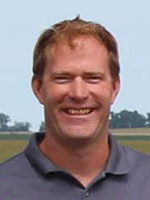
Regional report: Alfalfa winterkill outlook – Jerry Ruetten, John Brantsen and Mark Case, Vita Plus
 Southwest Wisconsin – By Jerry Ruetten, Vita Plus Dodgeville dairy specialist
Southwest Wisconsin – By Jerry Ruetten, Vita Plus Dodgeville dairy specialist
As this winter comes to a close in southwest Wisconsin, many alfalfa producers are concerned about winterkill. We experienced a wet and warmer-than-normal start to winter that carried into late December before freezing. Since then, we have had a sporadic snow cover and multiple periods of below-zero temperatures. Only time will tell as we wait for the frost to come out of the ground and watch fields green up. Then we can evaluate how much winterkill there may be.
In the meantime, we can brush up on our strategy for assessing alfalfa stand conditions. In this paper, Dr. Dan Undersander, University of Wisconsin-Madison agronomist, outlines considerations to use on a field-by-field basis when deciding which stands to keep in production and which should be tilled up. Other helpful tools from UW-Extension can be accessed by clicking here.
 Northwest Iowa and southwest Minnesota – By John Brantsen, Vita Plus dairy specialist
Northwest Iowa and southwest Minnesota – By John Brantsen, Vita Plus dairy specialist
I really have not seen any areas of concern regarding winterkill in northwest Iowa and southwest Minnesota. The last growing season was tremendous for alfalfa and fields likely went into winter with healthy plants and adequate moisture. Most farmers that I visited said they thought they had enough regrowth on their alfalfa fields following their last cutting. We had plenty of snow cover in the area most of the winter and we did not have much for freeze-thaw situations that would have left fields with ice-covered areas.
 Western Michigan – By Mark Case, Vita Plus dairy specialist
Western Michigan – By Mark Case, Vita Plus dairy specialist
Here in Michigan, we are just now getting thawed out from a mild winter. I was recently asked when I think the weight restrictions will be lifted, meaning the frost is out – or almost out – of the ground.
I asked Nate Sparks, North Central Co-op Fremont agronomy manager about alfalfa winterkill and he said he has not yet seen any. The grass is just starting to get a little green hue to it, but alfalfa is still dormant. He told me the only way to determine if there is winterkill in alfalfa is to dig up roots and visually inspect them. Nate said, with the cycles of freezing and thawing that we have had this winter, he would not be surprised if we see some alfalfa winterkill.
With the importance of high-quality forages in a cost-effective ration, I would recommend scouting fields in the next few weeks to make sure alfalfa looks good. If you do find winterkill, you need to implement a plan to make sure you have other forages to fill the void.
| Category: |
Crop varieties Forage Foundations |

